UNIT 18
Background
-
1.In the 1980s, there were new sounds and rhythms that were not available before:
-
a.Electronic synthesis and digital sound generation;
-
b.New rhythms from “outsider” styles:
-
1)Energized rock beat derived from punk;
-
2)Variations of the afterbeat from reggae;
-
3)16-beat rhythms from funk, black pop, and disco.
-
2.Fusions
-
a.Punk and disco seem opposite to one another, yet post/punk and post/disco fusions were an important feature of the 1980s. Called DOR (dance-oriented rock), these were a variety of styles that combine insider/outsider features.
-
b.These fusions were different from those of the past for 4 reasons:
-
1)The 1980s was the first decade of rock music that was not influenced by blues;
-
2)Outsider styles came from within (rather than from outside of) rock-era music;
-
3)Due to the blending of rock styles, the boundaries between rock, R & B, and pop became more transparent;
-
4)The new music video brought together sound, image, and movement to create a new genre.
-
3.MTV and music videos
-
a.Although cable television had been around since 1948, in the 1980s television was still dominated by the major networks: NBC, ABC, and CBS.
-
b.MTV began broadcasting on cable in 1981 and at first aired videos that appealed mostly to young, white audiences. The first video broadcast was “Video Killed the Radio Star” by the British new wave group, the Buggles.
-
c.In 1982, Michael Jackson’s video “Thriller” (1982) broke the color barrier.
-
d.The Cable Act of 1984 deregulated the television industry, thus ending the near monopoly of NBC, ABC, and CBS.
-
e.Consequences of music videos:
-
1)Changed the relationship among story, image, and sound. Now artists created song and video as an integrated whole, rather than writing a song to fit a story as in film or musical theater.
-
2)The look of a group or artist and the quality of the video are now emphasized and often determined commercial success.
Pop in the 1980s
-
1.In the 1980s, pop is distinguished by these characteristics:
-
a.Gender, race, and sexual preference are non-issues (see, for example, Boy George, at right);
-
b.New media resources and the importance of synthesizers;
-
c.Multifaceted entertainers;
-
d.Open to many and diverse influences.
-
2.Musical features:
-
a.Intelligible lyrics that tell a story;
-
b.Singable melody;
-
c.Layers of riffs in the texture;
-
d.Set to a good, danceable beat.
-
3.Relationships of 1980s pop to Motown
-
a.The musical features listed above were also important in the Motown sound, but in the 1980s these features are updated.
-
b.Motown strove for a black pop sound that would transcend race and would have enduring popularity. Many pop acts of the 1980s have transcended race and continue to be popular.
-
c.Michael Jackson provides the link between Motown, for which he recorded with the Jackson Five (see photo at right), and the pop middle-ground of the 1980s.
-
4.Michael Jackson (1958-2009)--see photos at right
-
a.Revived the idea of the all-around performer and established the music video as an integrated mode of expression.
-
b.Collaborated with composer/arranger/producer Quincy Jones on his first major album, Off the Wall (1979) and on Thriller (1982).
-
c.The “Thriller” video transformed the music video from a song with video into a mini-film with the song as a focal point. Jackson’s dancing is central to the video.
-
d.“Thriller” (1982)--title song from the album
-
1)Long introduction.
-
2)Uses extensive electronic and conventional instruments in a skillful arrangement.
-
3)Dense, complex texture, with layers of riffs.
-
4)Strong backbeat; a relentless bass drum thump on each beat; several layers of percussion marking a 16-beat rhythm.
-
5)Jackson’s light voice contrasts with the dark, scary voice of Vincent Price (see photo at right), which is heard in a rap-like section at the end.
-
6)Verse/chorus form (as in Motown songs) with Jackson prominent in the verse, and backup singers and instruments prominent in the chorus.
-
*Listen to “Thriller,” and follow the Listening Cue in the text.
-
-
e.Only 3 tracks from the album were shot as music videos, but each song is distinctive; for example, the punk-inspired beat of “Beat It” and the hard-edge riffs that begin “Wanna Be Startin’ Something.”
-
-
5.Madonna (b. 1958)--see photo at right
-
a.Combines provocative, shocking themes with accessible music in dance rhythms.
-
b.The song “Like a Prayer” (1989) confronts racism and religious hypocrisy, among other issues.
-
1)Simple, catchy melody; plain singing.
-
2)Contrasts in sound, rhythm, and texture; sustained harmonies under vocals, and active, dense texture elsewhere.
-
3)Active accompaniment, with both electronic and conventional instruments.
-
4)16-beat rhythm at a dance tempo.
-
*Listen to the song “Like a Prayer,” and follow the Listening Cue in the text.
-
-
c.The video “Like a Prayer”:
-
1)Has scenes with religious imagery, symbols of racism, and numerous incongruities, along with Madonna wearing a revealing dress in every scene.
-
2)The story has no real continuity, and there are long stretches where Madonna does not sing (even though she sings at the same points in the song). This illustrates the new trend: a music video can now be distinct from the song that initiated it.
-
3)This video outraged many people, but it made Madonna popular.
-
*Watch the video “Like a Prayer,” and notice how it takes on a life of its own.
-
d.Madonna’s image and career
-
1)Madonna continues to be a controversial figure. Many believe that she is a role model for women, because she has challenged conventional values and has taken total control of her career: writing, producing, choreographing, and making business decisions.
-
2)Others believe she is an attention-getter to obscure the fact that she lacks talent as a singer, a dancer, and a songwriter.
-
3)In any case, Madonna has been an important figure in popular music, as well as a role model for female singers from the 1980s on.
Post-Punk/Post-Disco Fusions: Prince
-
1.Prince (1958-2016)--see photo at right
-
a.Prince drew on many different styles--rock, R & B, funk, jazz, disco, and pop--to create his unique sound. He mixed together many musical elements to evoke a particular mood.
-
b.“Sign ‘O’ the Times” (1987)
-
1)Lyrics present a bleak view of modern life, with the music contributing to the picture:
-
a)Begins with a complex, but empty-sounding, rhythmic pattern on a synthesizer and electronically-generated percussion sounds. These substitute for a rhythm section and continue throughout the song to suggest despair.
-
b)Verse/chorus form, but without a hook in the chorus. Instead of an increased texture at the start of the chorus, instruments are removed, and the bleak sound of the opening returns.
-
c)No conventional rock band; only electric guitar and synthesizers.
-
d)No harmony in the verse; slowly changing chords in bridge.
-
e)Spare texture.
-
2)Influences:
-
a)Complex, layered rhythms from funk;
-
b)Realness from punk and rap;
-
c)Rock guitar style from electric blues and jazz.
-
*Listen to “Sign ‘O’ the Times,” and follow the Listening Cue in the text.
-
-
c.Although many of Prince’s songs sound different from one another, there are some stylistic consistencies:
-
1)Mix of synthesized and conventional instruments;
-
2)Open texture, with complex interplay between regular time-keeping and syncopation;
-
3)A distinctive feature in each song, which sets it apart: for example, in “Sign ‘O’ the Times” it’s the absence of bass and drums, and the sustained chords in the 1st part of the chorus.
The Maturation of Black Pop
-
1.Background and musical features
-
a.Singers like Tina Turner, Natalie Cole, and Luther Vandross (see photo at right) sang about love in a more mature way than singers of the 1960s. Lyrics speak not only about romantic love, but also about problems in relationships.
-
b.Synthesized sounds replace most conventional instruments, including strings and rhythm instruments.
-
c.By the beginning of the 1980s, the 16-beat rhythm was the norm; it offered more opportunities for interplay than the rock rhythm. Time-keeping became more active, but it was generally in the background.
-
d.The influences from reggae are evident: offbeat rhythms in the middle of the texture with a free bass line underneath.
-
2.Tina Turner (b. 1939)
-
a.After a career in the late 1950s and 1960s as part of the Ike and Tina Turner Revue, the couple divorced. Tina’s career revived in the early 1980s when she was in her forties.
-
b.“What’s Love Got to Do with It” (1984)
-
1)Presents an embittered view of love, based on her own experiences.
-
2)Turner’s gritty voice and soulful, emotional singing are the most important parts of the song.
-
3)The mostly synthesized accompaniment is muted and in the background.
-
4)Influence of reggae in the rebound backbeat and free bass line.
-
*Watch Tina Turner sing “What’s Love Got to Do with It.” Follow the Listening Cue in the text.
-
-
c.Tina Turner and other black pop singers of the 1980s transcended race, which had become a non-issue in popular music.
Punk-Inspired Pop
-
1.In the 1980s, rock used more synthesized effects and, influenced by punk, used a purer version of the rock rhythm, which was spread throughout the texture.
-
2.The Go-Go’s, an all-girl rock group (see album cover at right), exemplify the new sound. Their lyrics are simple and happy, but the beat comes from punk.
-
3.Van Halen--see photo at right
-
a.Band associated with heavy metal due to the prominence of guitar and Eddie Van Halen’s virtuosity, but Van Halen merges the power of metal with mainstream styles and makes prominent use of synthesizers.
-
b.Members are Alex Van Halen (drums), Michael Anthony (bass), Eddie Van Halen (guitar), and David Lee Roth (vocals).
-
c.“Jump” (1983)
-
1)Synthesizers replace lead guitar for most of the song; Eddie Van Halen has only a short guitar solo.
-
2)Vibrant, bouncy, non-aggressive rhythms; bass line is a single note at rock-beat speed. This punk-influenced, distilled form of rock rhythm became characteristic of 1980s bands. (See text, p. 305.)
-
3)Upbeat lyrics, reinforced by syncopated riff, guitar and synthesizer solos, and moderate tempo.
-
4)Open texture caused by the almost complete absence of chords played on rhythm guitar.
-
*Watch Van Halen’s music video of “Jump,” and follow the Listening Cue in the text.
-
-
c.These synthesizer sounds, often in a high register, and the new approach to rhythmic texture represent a fresh trend in pop and rock in the 1980s.
Significant Rock
-
1.In the 1980s, rock musicians often wanted to draw attention to social and political issues.
-
2.Musicians and producers came together to provide aid for various humanitarian causes, such as Band Aid, Live Aid, Farm Aid, and others. This began a trend in which celebrity musicians, notably Bruce Springsteen and U2 among others, would use their money and fame to raise money for charity.
-
3.Bruce Springsteen (b. 1949)--see photo at right
-
a.He worked with bar bands in New Jersey and also played solo guitar in Greenwich Village, NY, where he encountered the punk scene.
-
b.Continued the core traditions of rock, always staying close to his rock and roll roots, although he continues to expand and update his sound.
-
c.Combines accessible and obvious features with subtle touches.
-
d.“Born in the U. S. A.” (1984)--Springsteen and the E Street Band
-
1)Anti-war lyrics tell the story of a Vietnam veteran who returns home.
-
2)Vocals are edgy and raspy.
-
3)Minimal accompaniment is dominated by synthesizers: the song begins with a single octave on piano (low), a heavy backbeat (middle), and a synthesizer riff (high).
-
4)As the song unfolds, the open texture is filled in by the vocals and by other instruments.
-
5)Title-phrase riff, heard in instruments and vocals, continues throughout.
-
*Listen to “Born in the U. S. A.,” and follow the Listening Cue in the text.
-
e.Springsteen exhibits other styles besides “significant rock”: punk, country, and synth rock, among others.
-
3.U2--see photo at right
-
a.Irish band: Bono (lead vocals & rhythm guitar), The Edge (guitar, keyboard, vocals), Adam Clayton (bass), and Larry Mullen (drums).
-
b.U2’s political and social edge was evident by 1983 with the album War; they want rock to be a force for change.
-
c.U2‘s sound grows from punk with its persistent rhythms at several speeds and little syncopation.
-
d.In 1984 they began to collaborate with Brian Eno (b. 1948), a pioneer in electronica and ambient music, who helped to create the band’s sound world. A four-part texture surrounds Bono’s vocals:
-
1)Two low-range sounds--repeated notes at rock-beat speed and beat keeping on the bass drum;
-
2)Mid-range percussion sound--rock-rhythm layer on sock cymbal;
-
3)Medium high-range sound--guitar line at rock speed.
-
e.“Where the Streets Have No Name” (1987)
-
1)Hopeful lyrics, set to a simple, tuneful, folk-like melody.
-
2)Rich instrumentation with characteristic U2 texture described above.
-
3)Extended instrumental introduction (2 minutes long) features organ and synthesizers; the guitar emerges with a jig-like rhythm, which is converted into a 16-beat rhythm that continues for the entire song.
-
4)The instrumental setting and texture, created by Eno give the simple melody power and impact.
-
-
f.U2’s sound became increasingly more sophisticated, investing a simple melody with intensity by surrounding it with rich and powerful accompaniment.
-
4.Significant-Sounding Rock
-
a.In the 1980s, U2 and Bruce Springsteen used their music to draw attention to humanitarian causes.
-
b.The emotional power of their lyrics is intensified by the simplicity of the musical settings:
-
1)Rhythms with little syncopation--hardly any rhythmic interplay, which had been so important in earlier rock;
-
2)Full, yet open, musical textures, usually with little variation.
Renewing Rock and Roll
-
1.In 1988, Jeff Lynne formed a group called the Traveling Wilburys, comprising musicians Bob Dylan, Tom Petty, George Harrison, Roy Orbison, and himself.
-
2.This group, which brought together folk, country, and rock artists, signaled the beginning of the neo-traditional movement of the 1980s and 1990s.
-
-
3.Other groups and solo artists in the neo-traditional movement included:
-
a.Stray Cats and later the Brian Setzer Orchestra--jump band revival;
-
b.Stevie Ray Vaughan and Robert Cray--blues revival;
-
c.Tracy Chapman and Suzanne Vega--socially-conscious rock;
-
d.John Mellencamp and Tom Petty and the Heartbreakers--”heartland” rock.
-
3.John Mellencamp (b. 1951)--see photo at right
-
a.Eclectic singer-songwriter who sets relevant lyrics to music that blends rock, R & B, blues, folk, and country styles.
-
b.“Paper in Fire” (1987)
-
1)With down-home vocals, Mellencamp tells a story that describes the fate of selfish people;
-
2)Verse/chorus form, in which the verse is subdued, and the chorus bursts forth with dramatic, syncopated chords;
-
3)Acoustic instruments include banjo, slide guitar, fiddle, accordion, harmonica, and tambourine--all of which recall earlier styles;
-
4)Fast rock rhythm with much syncopation;
-
5)Numerous riffs.
-
*Watch the music video, “Paper in Fire,” and follow the Listening Cue in the text.
Looking Back, Looking Ahead
-
1.In the 1980s, several important trends stand out, notably the increased importance of synthesized sounds, the new punk/funk/disco/reggae-influenced rhythms, and the return to relevant lyrics. Other developments were the middle-ground pop style, as well as the music video as an expressive and integrated art form.
-
2.As the music industry continued to expand, many pop and rock acts achieved an unprecedented commercial success that would continue into the next decade. Yet the 1990s would also see alternative, cutting-edge styles that would emerge in towns and cities that were out of the mainstream.
Photos
-
1.Bruce Springsteen and the E Street Band
-
2.U2
-
3.Michael Jackson
-
4.Madonna
-
5.Prince
-
6.Tina Turner

Beyond Rock in the 1980s

Unit Eighteen
Beyond Rock in the 1980s


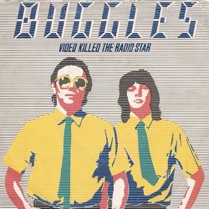



Boy George

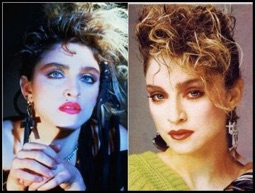
The Jackson Five with Michael in the center
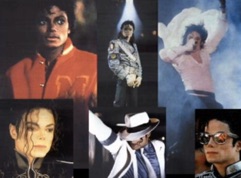
Various looks of Michael Jackson
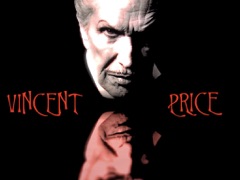
Vincent Price was the star of numerous scary movies.
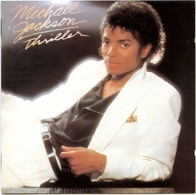
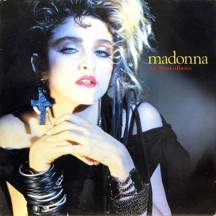
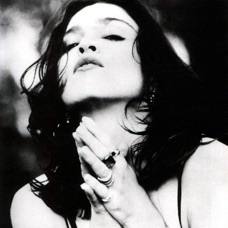

Madonna with Britney Spears in 2008

Prince
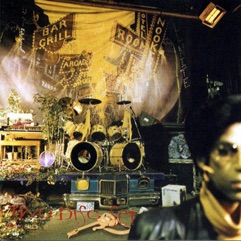
Prince’s double album, Sign ‘O’ the Times

Luther Vandross (1951-2005)

Tina and Ike Turner in the 1960s



Eddie Van Halen
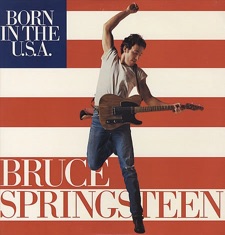

Bruce Springsteen
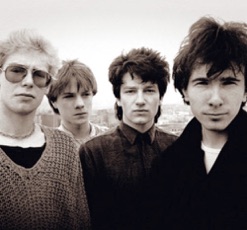

U2: Adam Clayton, Larry Mullen, Bono, The Edge
Bono


The Traveling Wilburys: (left to right)George Harrison, Tom Petty, Bob Dylan, Jeff Lynne, Roy Orbison
John Mellencamp

Van Halen: David Lee Roth, Alex Van Halen, Eddie Van Halen, and Michael Anthony
Tina Turner
